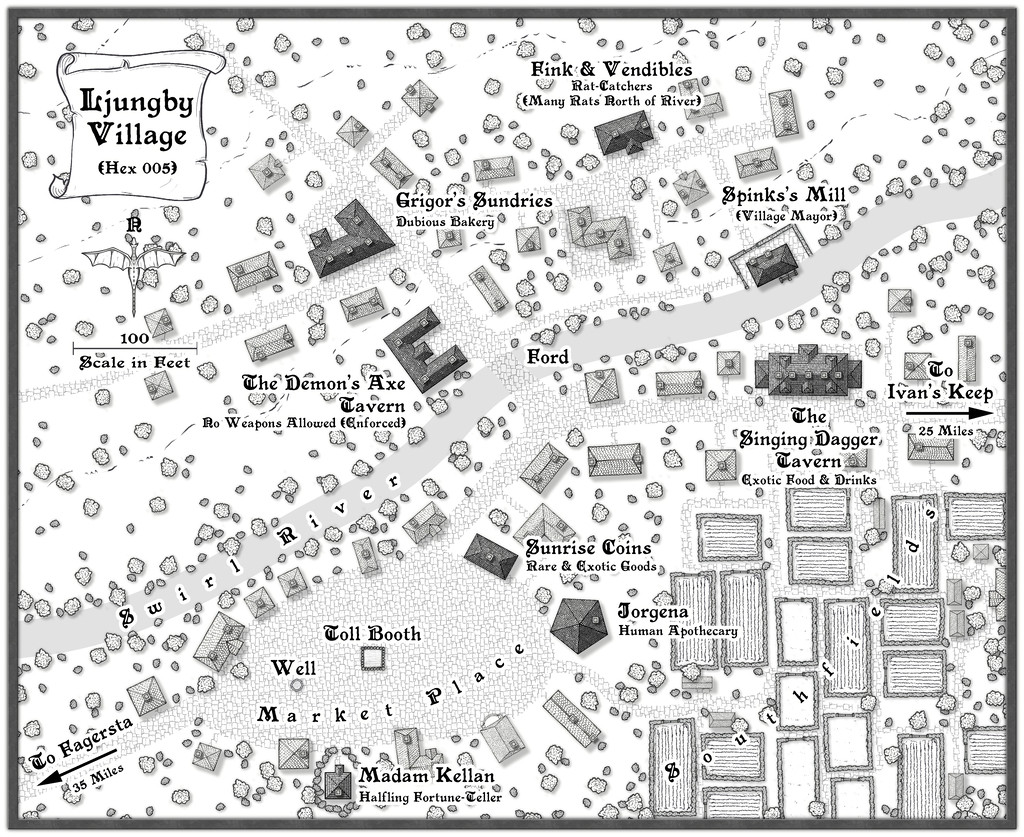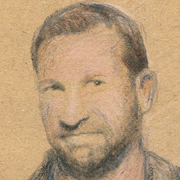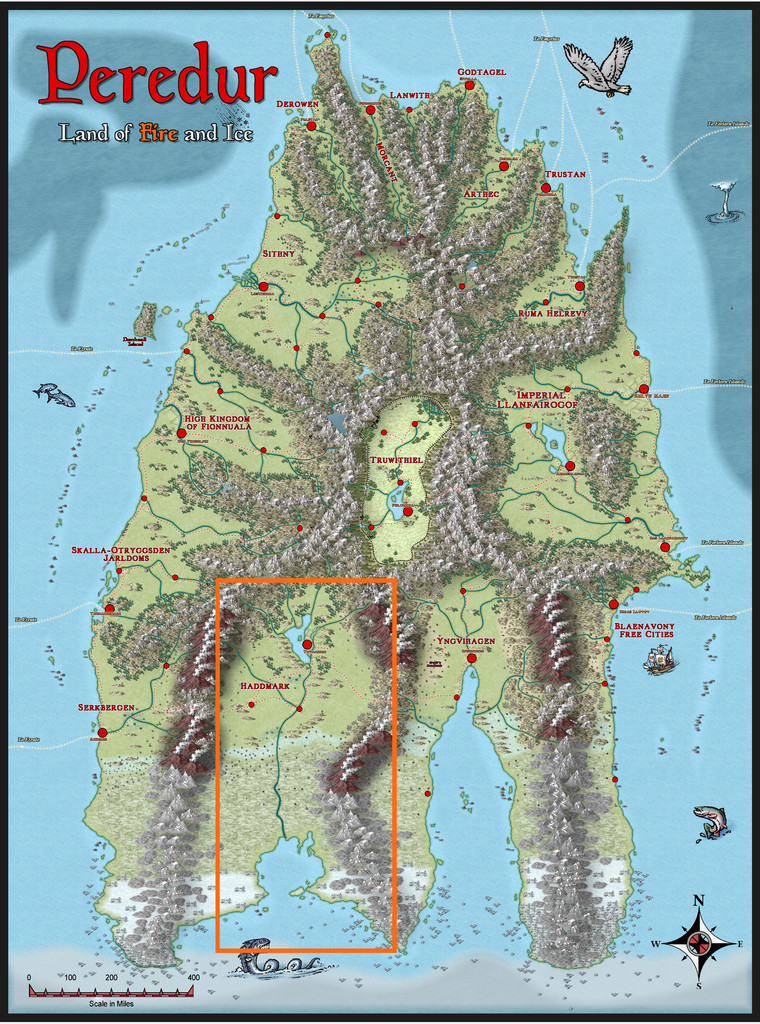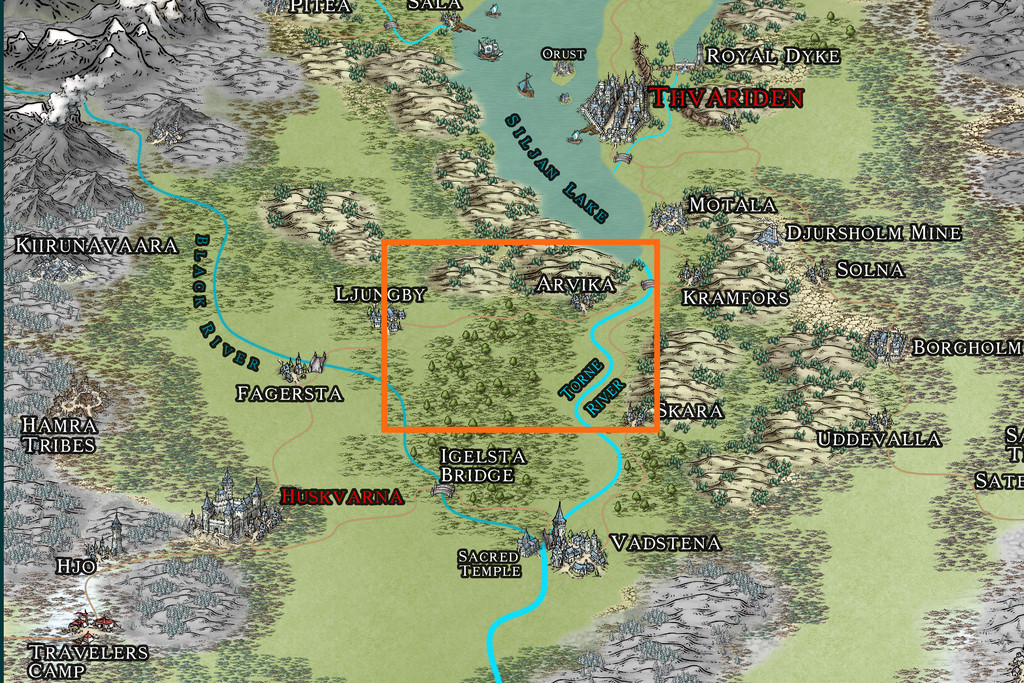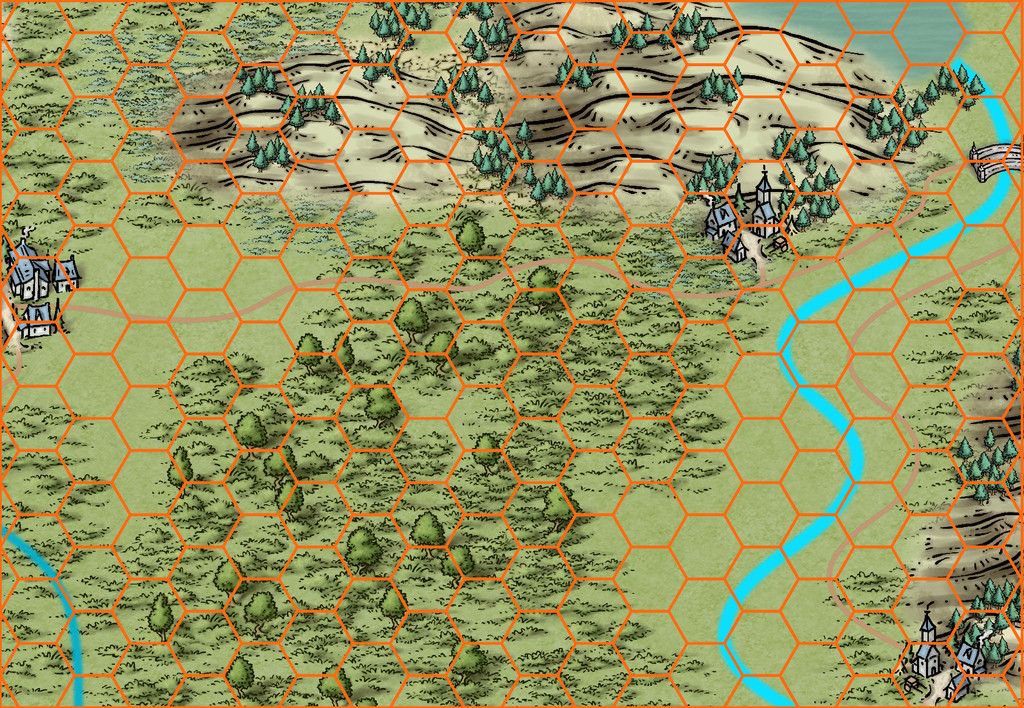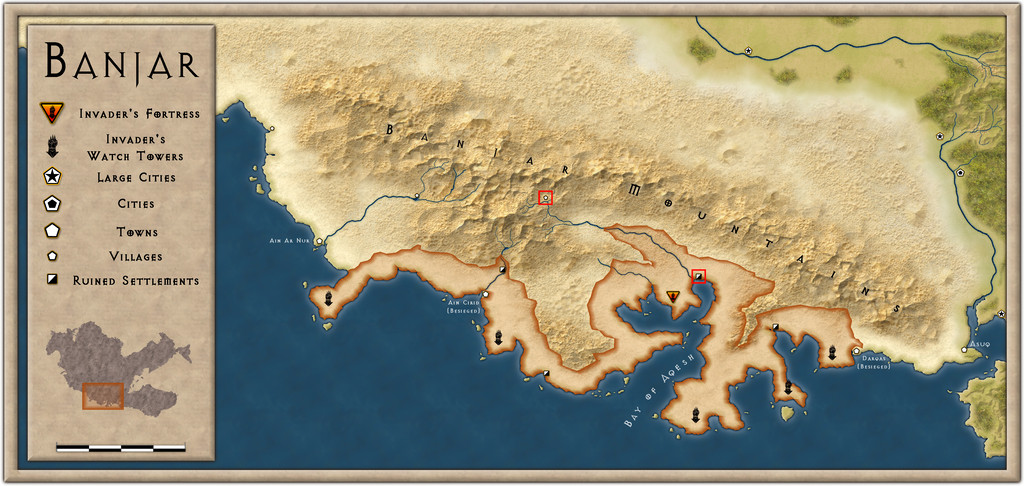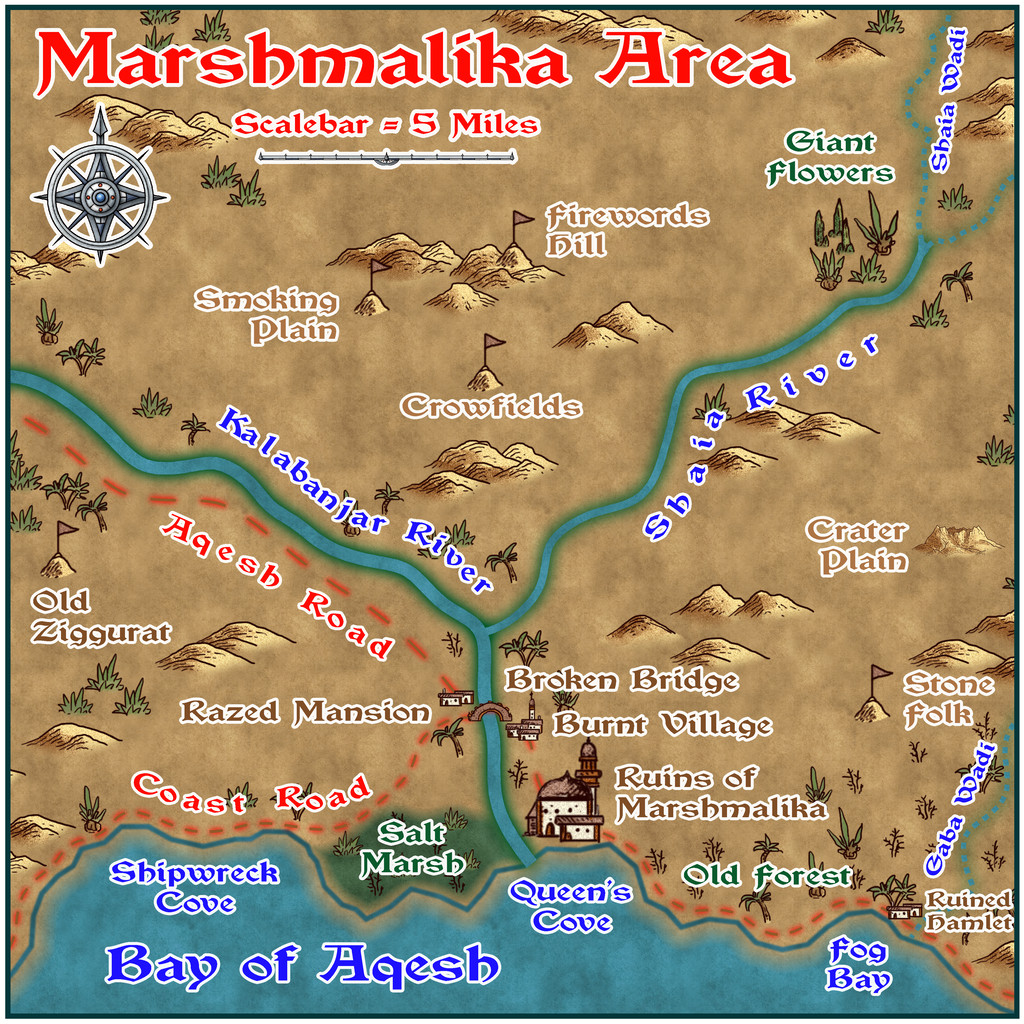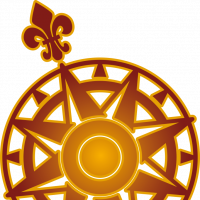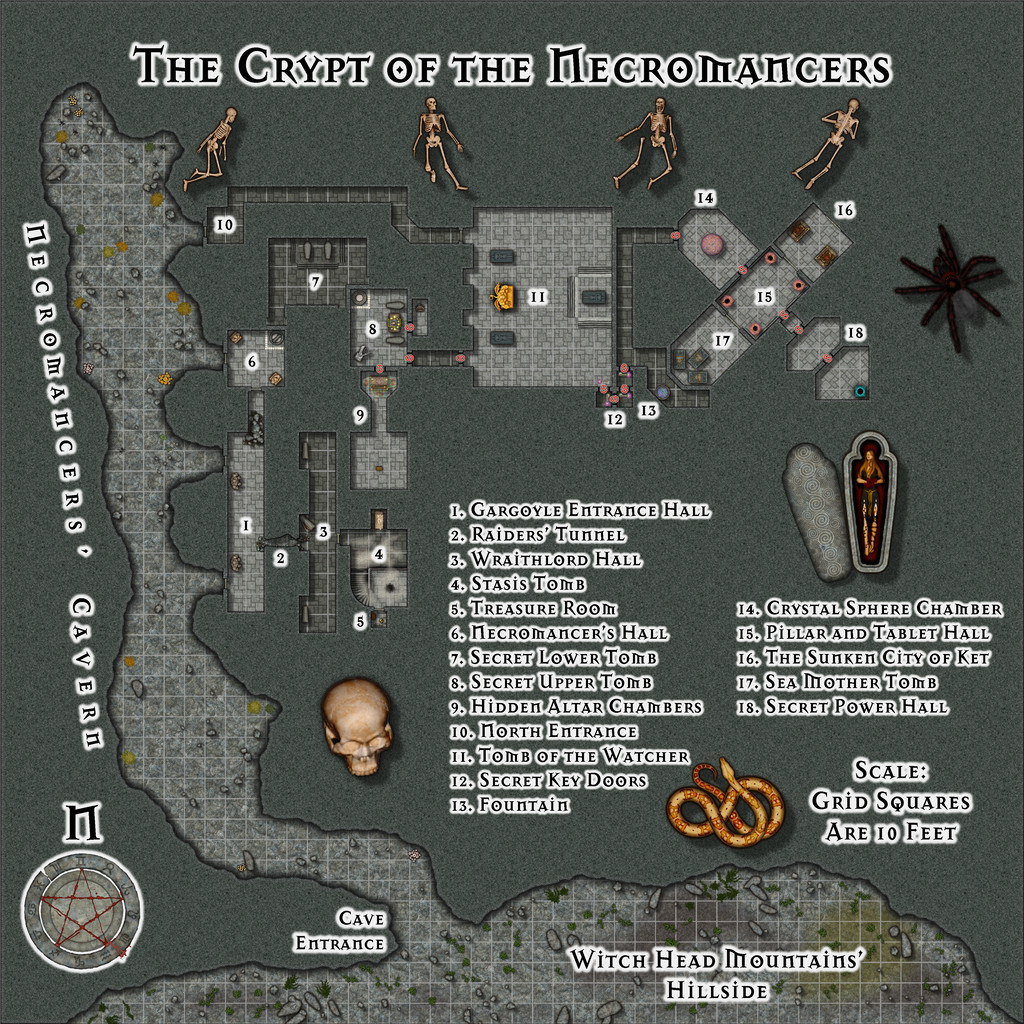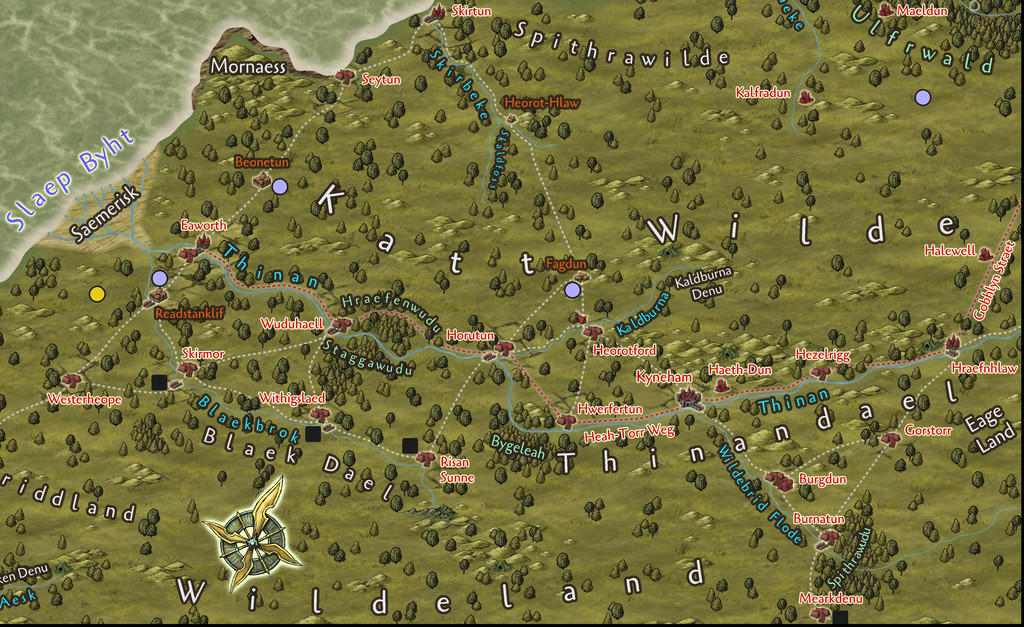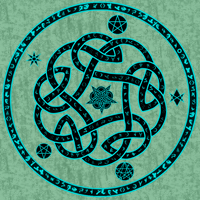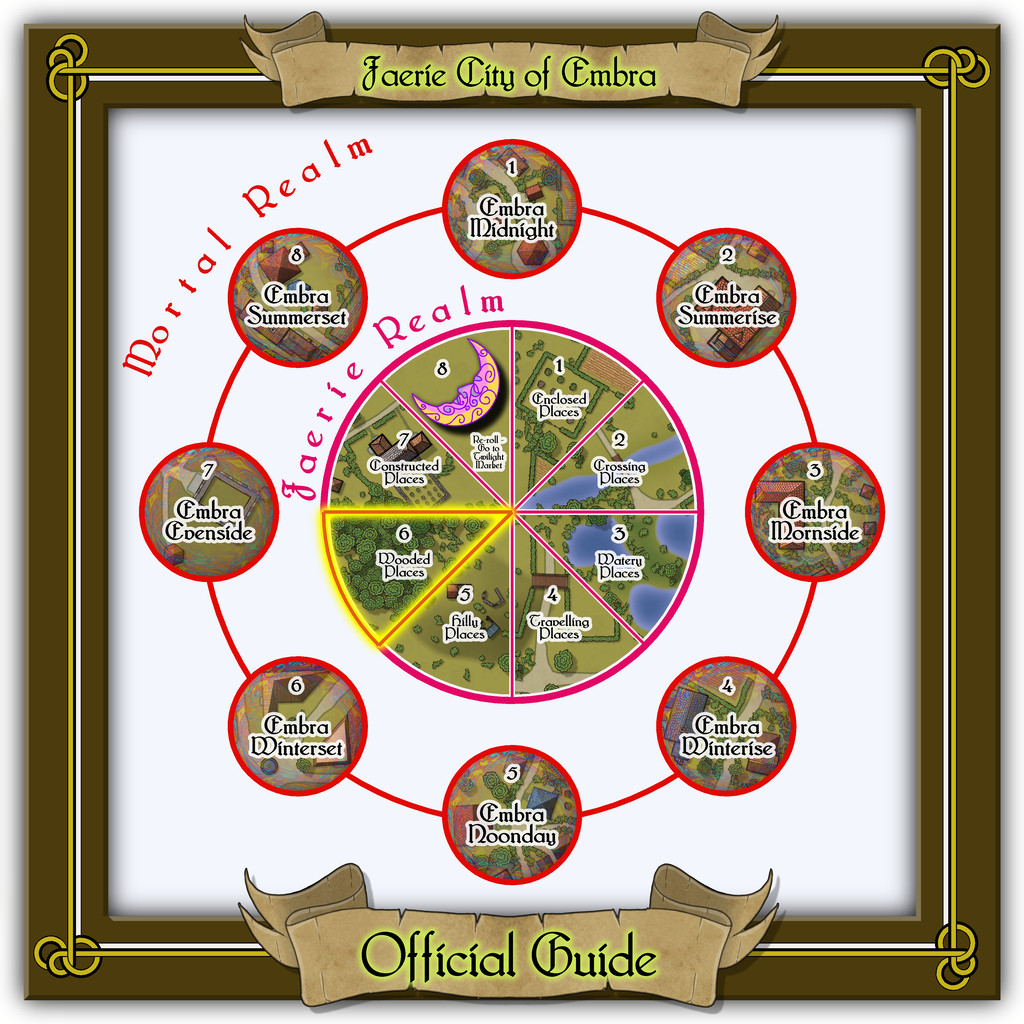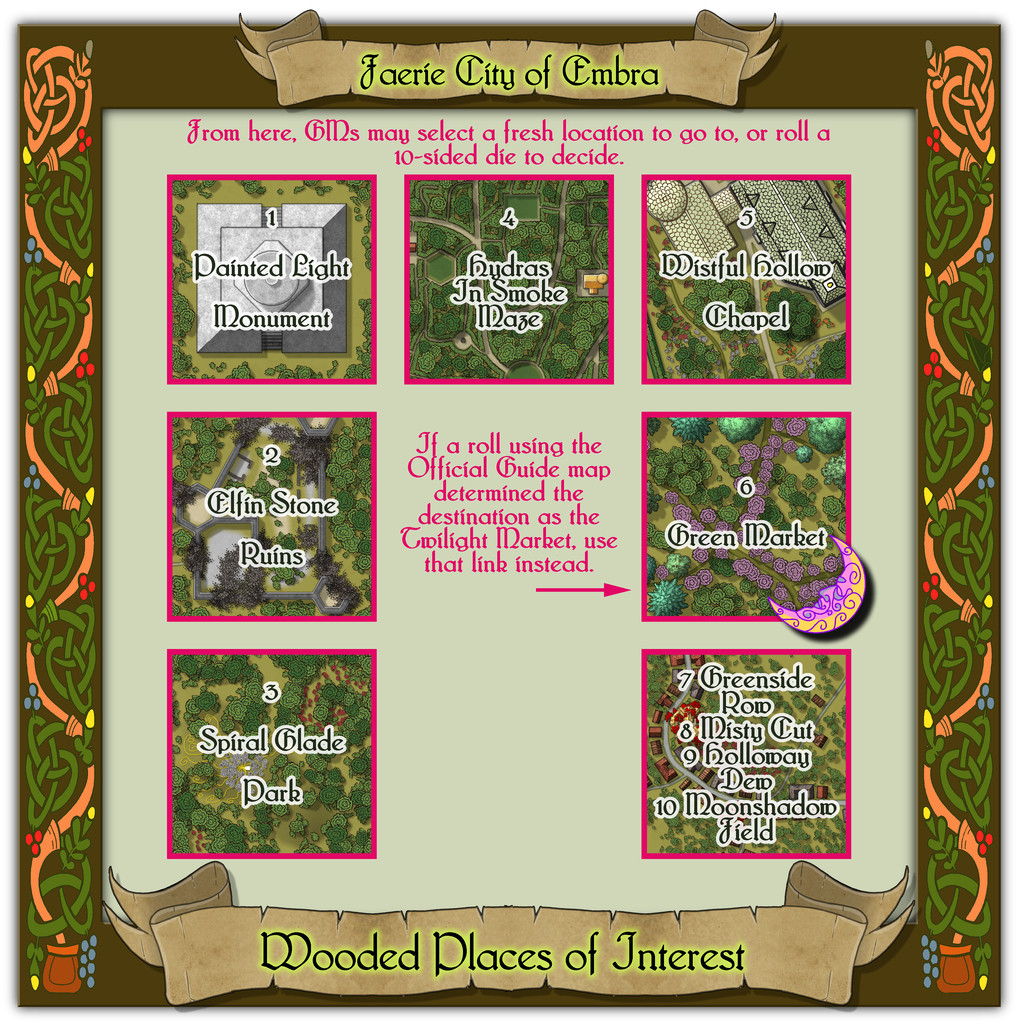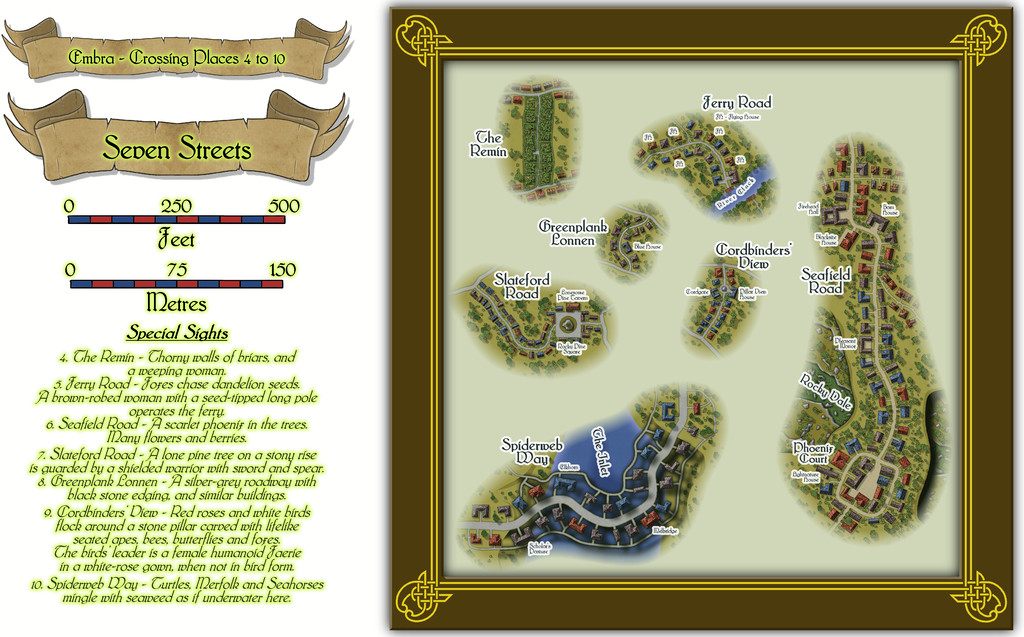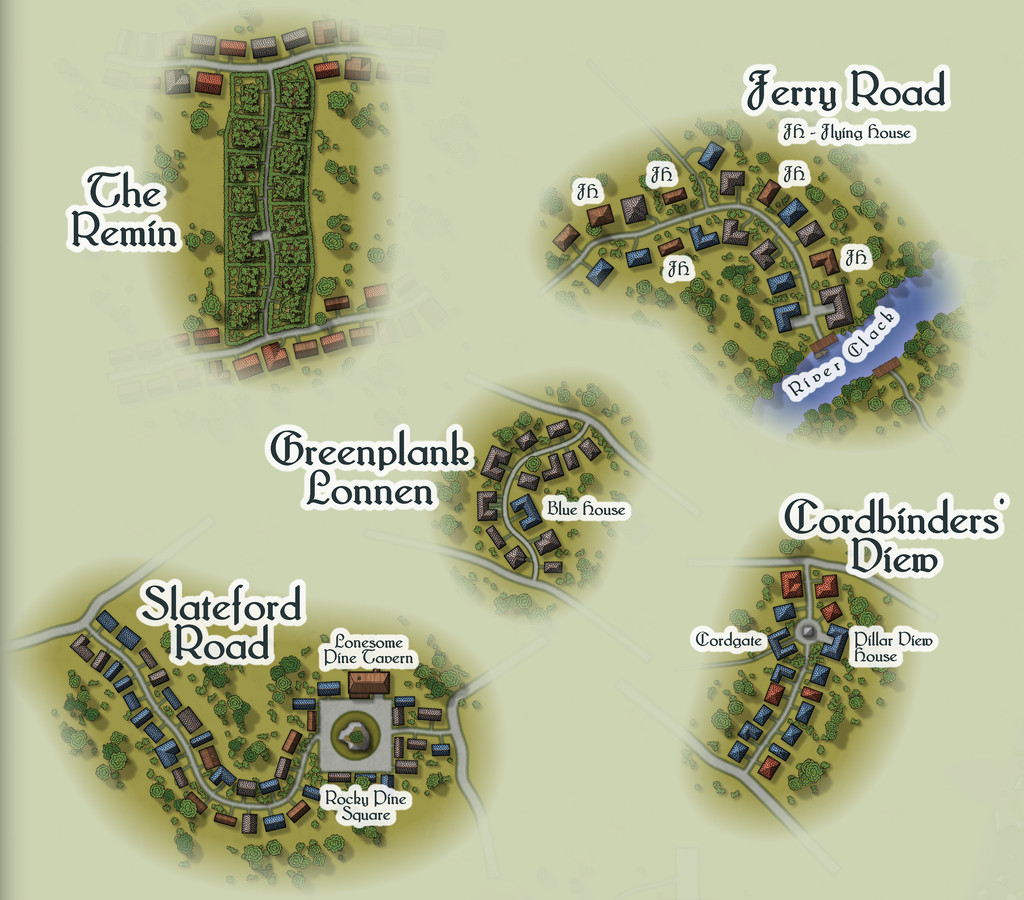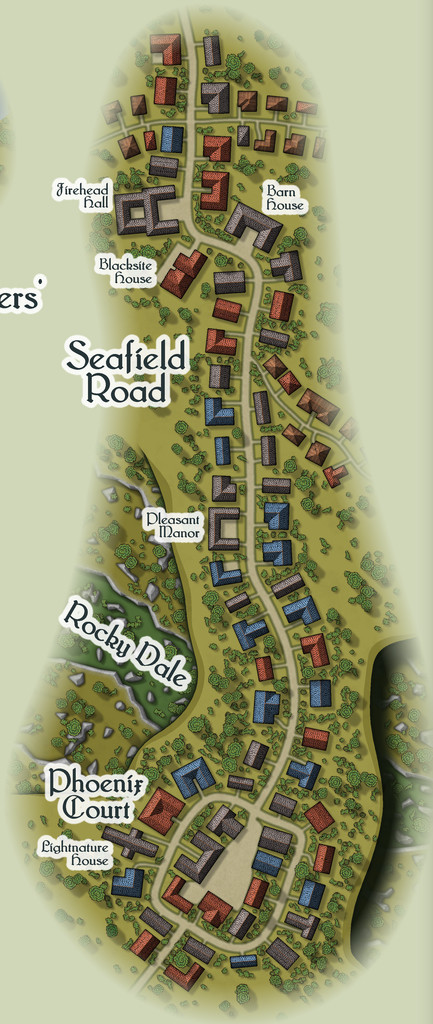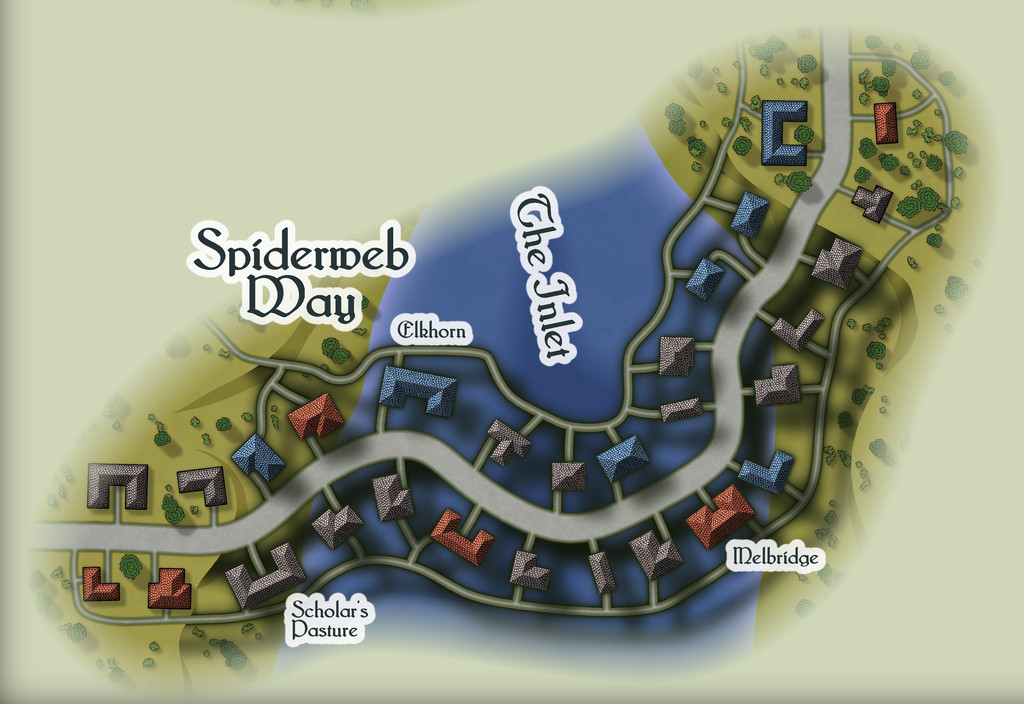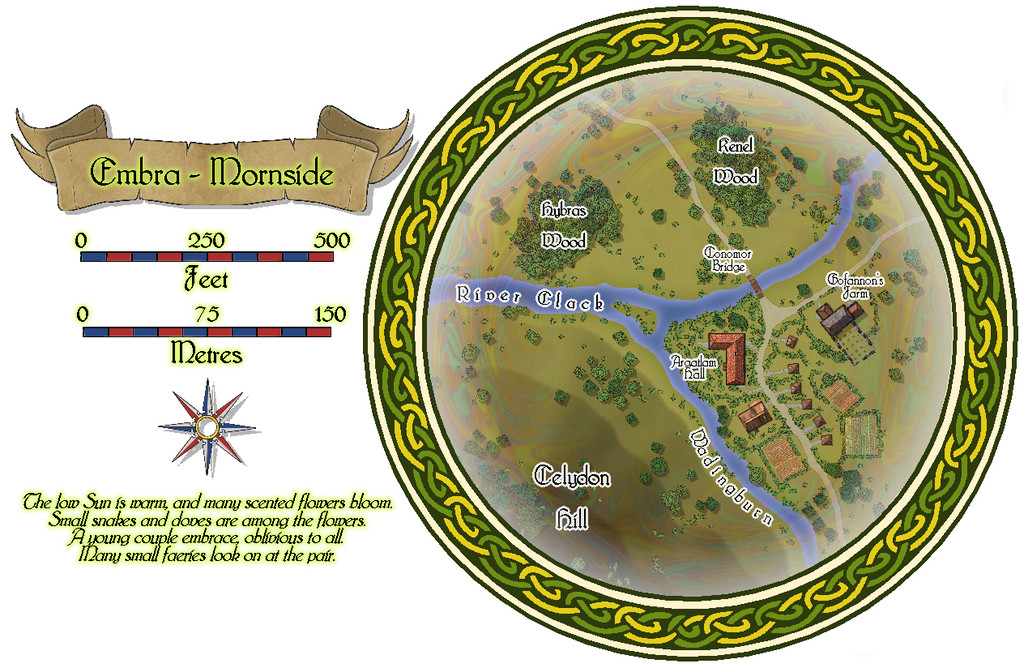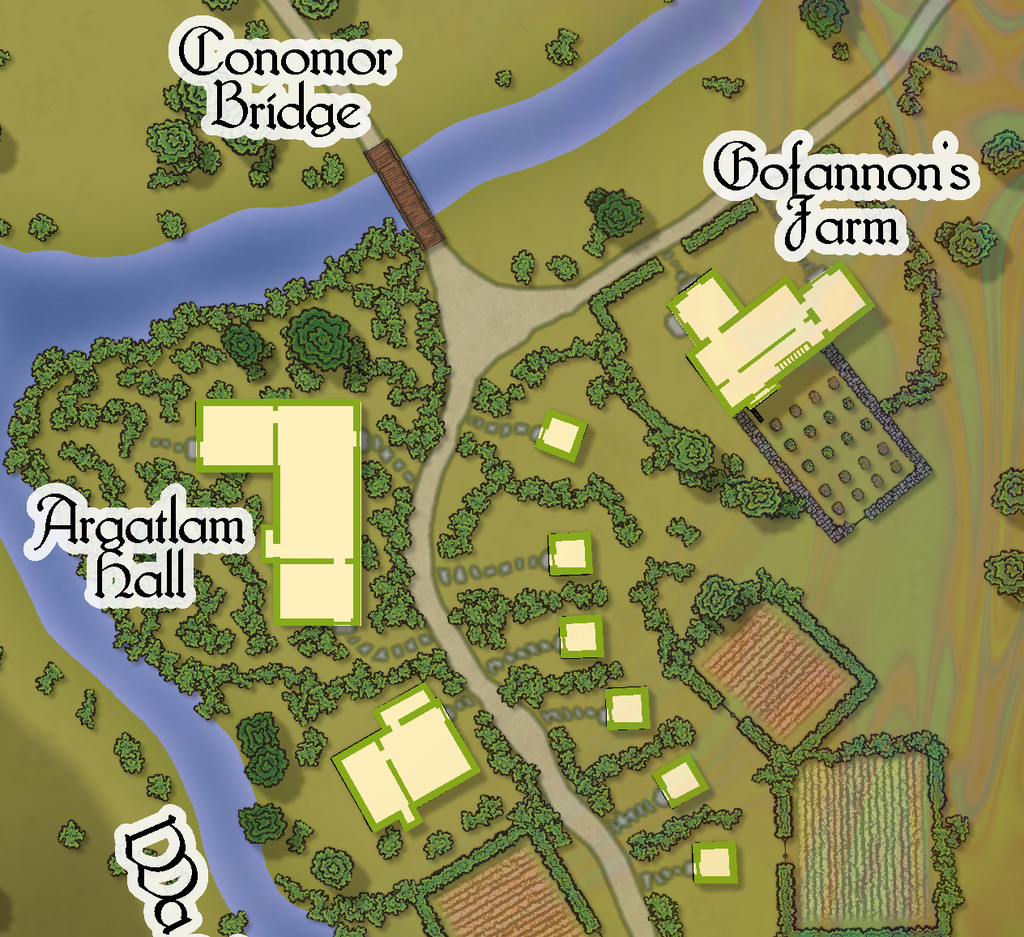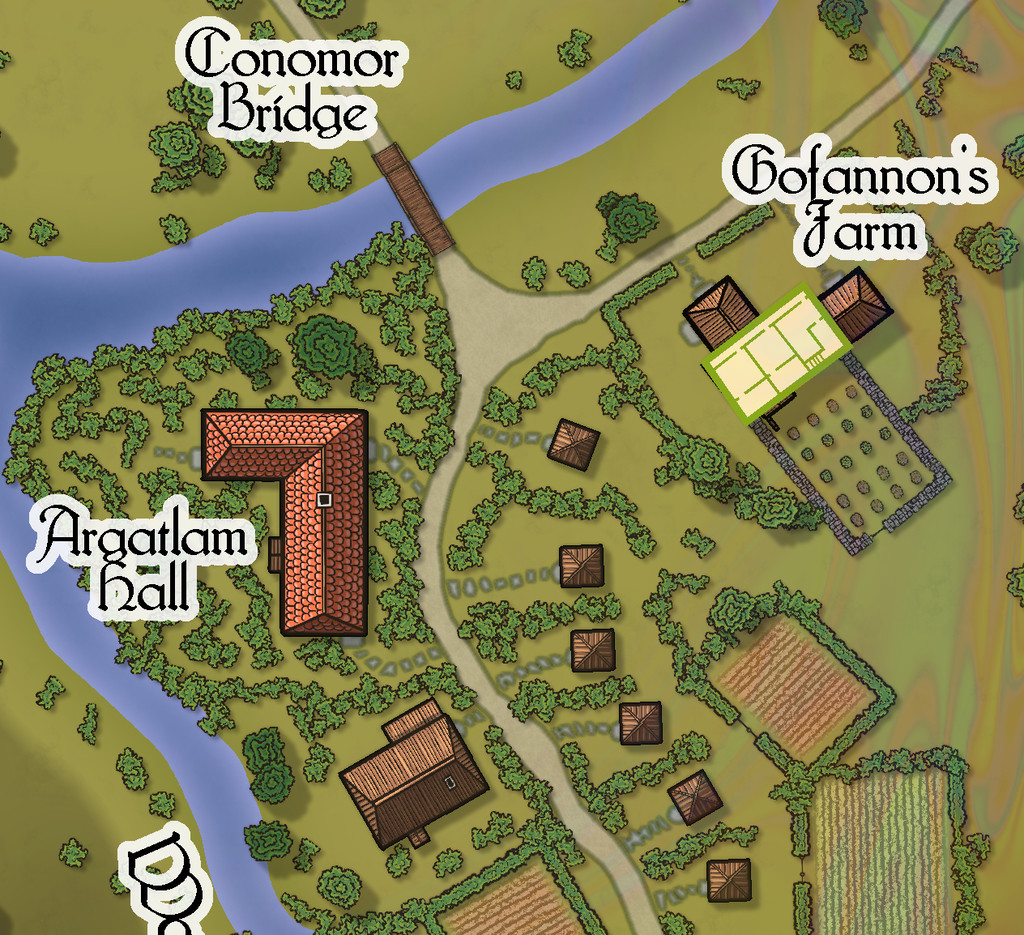
Wyvern
Wyvern
About
- Username
- Wyvern
- Joined
- Visits
- 3,149
- Last Active
- Roles
- Member
- Points
- 5,375
- Rank
- Cartographer
- Badges
- 24
-
Community Atlas 1000th map Competition - with Prizes [August/September]
So, the first of my theoretical ten villages is ready, from Hex 005 of the hex-map somewhere above (or here, in case that's a bit easier to find!), Ljungby. A few more details are in that linked post, although the PDF is here as well for those interested. Deliberately, I've kept the notes short, hoping that might improve my chances to complete all ten village maps!
-
[WIP] Community Atlas, 1,000 Maps Contest: Villages in The Whispering Wastes of Haddmark, Peredur
Delayed for a clutch of reasons during the last couple of months, I have, off-camera, been continuing with my sort-of Dungeon24 project for the Nibirum Atlas, drawing small dungeon maps, and, where necessary, the area maps to place them in. Progress has though been a lot slower than I'd hoped of late. Plus, as I was finalising the accompanying texts for the latest pair of maps, Remy Monsen announced the 1,000 Maps Competition for the Community Atlas, which has complicated matters further. We'll get to that shortly (although if you've seen my notes in the main Competition topic, you'll have some idea already).
As I'd enjoyed developing the black and white style reminiscent of that used in various of the Shadowdark RPG supplementary materials last time, with the OSR Dungeon style from Annual 97, I decided I wanted to continue with that for the other three maps created from designs rolled-up using the Explorer set of Inkwell Ideas Dungeonmorph Dice. As it's turned out, this has also become a pleasing way to help celebrate the Shadowdark RPG's winning of no less than four prestigious Gold Awards at this year's Ennies, announced at GenCon on August 2nd (for Best Layout & Design, Best Rules, Best Game and Product of the Year)!
Back to the dungeon map and where it was to go. The random choice for its location was to be Peredur, as last time, now though in the southern part of that island continent, in Haddmark:
I soon discovered that this region had been less heavily mapped than others on Peredur, and as none of the regional maps really fitted with what I'd been thinking of for this dungeon, came to the conclusion I'd need to draw an area map as well. Of course, I wanted a black and white option for that too, to try to emulate the style of hex-maps used for similar areas in the Shadowdark supplements. These have a very specific size, using 6-mile horizontal hexes, with 17 columns west-east, by alternating 10 and 11 rows north-south. Typically, I had to expand my map by one column to make sure I collected all the places in the area I eventually selected (after quite some internal debate), a minor amendment. The area I went with doesn't have a name-label, so, and partly for how I'd already started developing the dungeon map, it became the Whispering Wastes, here:
Even so, it was a bit of a squeeze! This was the base map, with a suitable hexgrid superimposed that I used to draw the final map, with the place-name labels hidden for clarity:
Then, as normal, I randomly rolled-up a variety of overland map features, in this case using tables, with occasional amendments or adaptations, found in the main Shadowdark rules (which have a specific hex-map design system). Indeed, aspects of those tables would allow the creation of more detail for many of the places. While time-consuming to do in full, I did give serious consideration to this for a while, although as luck had it, the dice came up with rather more hexes with features than the average for this map anyway - 41 instead of 31 - which acted as a deterrent.
Some places were obviously decided already, with the three small settlements and one bridge symbol (which I decided should be another settlement too), although randomness being what it is, only one of those coincided with the hex-feature rolls, so a few adjustments had to be made. I did though retain or adapt those "moved" features into the settlement hexes as well. After which, it was time for the CC3+ mapping!
I opted for the Annual 121 Black & White Fantasy overland style as the basis, since it has a useful range of symbol options, which was then labelled-up mostly using the standard Windows Arial font, except for the title, which continued the use of Primitive, from the 2015 Annual, as previously. And this is how it finished:
The highlighted hex-map border and individual number-labelled hexes follow the style set by the Shadowdark supplements, though I stuck with the Annual's normal road, water and river appearances for ease here. On-map labels are typically kept to a minimum on the Shadowdark maps I was mimicking, so the place-names for the one-hex features are all to be found in the accompanying PDF and text map notes once in the Atlas only. I also decided to extend the mapped region a little outside the hex-mapped zone, as while ordinarily those outer hex-lines would form the border, that felt a little too edge-of-the-world to me in this case, as well as creating problems for where to add the main title, compass pointer and scaling note.
Overall, I was pleased with how this turned-out, although I have a fondness for hex-maps anyway, so am likely biased!
-
Community Atlas: The Marshmalika Area of Kumarikandam
Completing my trip to the Banjar region of Kumarikandam recently, after the Sussara Region, I've now been visiting part of the coast by the mouth of the Kalabanjar River, the tiny red-square-marked ruined settlement at the head of the Bay of Aqesh on the area map from the Atlas (not the one in the mountains - that's Sussara!):
The map I'd generated in advance from the Inkwell Ideas "Ruins" dice set only covered part of the settlement, and given the large scale of the above map, as with the Sussara Region, I knew I'd have to begin with an area map to fit it into anyway. Having already prepared a 20-mile-square map for Sussara, I simply continued the process here, using the same Scorching Sun style for consistency, having generated a list of ideas for features on this map using the same random tables as for Sussara (albeit re-rolling any duplicates with that map), while taking into account the very different circumstances for this part of Banjar - invaded and devastated by incomers in the relatively recent past. Thus we arrive at the Marshmalika Area map ("Marshmalika" = Queen's Cove, incidentally):
Descriptions of what's where (with how recent some of them are), and the significance of the various items shown will be provided as text and PDF files in the Atlas, as usual, although it's fair to say there are battlefields, and many signs of devastation (not all created by the invaders; war is war, after all). Oh, and there are a LOT of ghosts. They make the invaders feel REALLY uncomfortable, although all they do is stand and stare (mostly). In ever increasing numbers. At any destroyed formerly inhabited place. By day and night, continually. Until the invaders leave.
-
Community Atlas: The Witch's Valley Head Area in eastern Alarius
Constructing sets of connected maps like this is always an organic process, with ideas for one influencing the other along the way. For these "Crypts" designs, I've been referring to Inkwell's own "Dungeonmorph Delves and Descriptions" book, one of which options has included an order of necromancers that collect strange things from many places, storing them in their own tombs, along with reminders of their greatest leader. Since this chimed with a very long-standing idea of my own from many years ago (it's a useful way of explaining random dungeon layouts sometimes!), I decided to indulge especially heavily from the Inkwell notes for this design, with just a few adaptations and changes, since it all seemed to flow together quite nicely otherwise. Additional elements - notably among the treasures - came from the random tables mentioned in my first posting here, or ideas that occurred along the way. Thus we arrive at The Crypt of the Necromancers map:
The mapping style is Sue's Creepy Crypts 1 & 2, from Annual issues CA 186 and CA 188, partly because I'd only used elements from it last time, and wanted to try out the complete style, partly because - of course - it's ideal for constructing burial layouts, and partly because it has those really invaluable individual step symbols, perfect for creating daises, or when the mapping design needs a non-standard staircase that rises straight before becoming a quarter-spiral at the top (in room 4 here - hopefully a little more visible on the Gallery version of this map). I've also used a couple of Sue's other symbols in this map, one from her City Domes Annual, CA 144A, the other from the CA 175 Marine Dungeon pack.
The outside, cave entry and long cavern to get to the dungeon proper, were simply sketched-in by hand - and those two blind side passages in the Cavern aren't accidental - after the Crypt layout had been drawn-in. The mechanism for drawing caves in this style is somewhat different to normal, and took a little experimentation to get right, particularly in relation to masking the outside of the Crypt's straighter wall-lines, as that's drawn a different way. And that 10-foot grid was actually drawn on three different sheets as a result of this - some of the lines only by hand!
I knew from the original sketched layout that there'd be space around the design to add a places list (expanded considerably by the text and PDF accompanying Atlas notes), and I opted to indulge further by using more of Sue's Creepy Crypt symbols as decoration to fill some of the spaces this left, and to add to the atmosphere. The coloration is deliberately muted and grey, in-keeping with the generally gloomy aura The Scar region encourages, aside from a Necromancers' Crypt not really being a likely place for bright wallpaper with cute puppies and kittens frolicking over it (though that would rather challenge an adventuring party's expectations)!
The next layout is to be from Inkwell's "Delver" dice set, which has a mixture of cavern and dungeon aspects to the designs. That's scheduled for somewhere on Kraken Island in the Forlorn Archipelago...
-
Community Atlas: Dendorlig Hall - A Sort-Of D23 Dungeon for Nibirum
So, as promised, the final submission version of the map is now completed, as of Day 280 of 2023 (i.e. yesterday!). And here it is:
You may not notice any difference from the Day 250 version posted last time, and I'm not sure there actually is one, at least not that would be obvious at this resolution. However, behind the scenes there have been substantial changes, as following discussions with Remy ahead of submitting the map for the Atlas, I've added descriptions as CC3+ map notes for each individual area, as hotspots tied to each number on the map, and which will thus be available in the FCW version of the Atlas map. The complete set of texts for all these, and the general map notes, will also be provided as a single PDF file, as normal.
This particular mapping style is very straightforward to use, and as noted earlier, is also a very forgiving one, which uses no sheet effects. Thus it wasn't a strong challenge to map with, for all that was an interesting experience in itself. However, adding the map notes and hotspots to the map was something I've never tried before, and that proved a useful exercise in expanding my CC3+ experience. It was a great deal more straightforward, and quicker to complete, than I'd anticipated too, which was a pleasant surprise. [This is the point where Remy admonishes me for getting some key part of the exercise wrong, of course...]
I'd never really considered adding notes to my maps electronically, since I normally only use printout versions of them, and while that's unlikely to change, this would be something I'd consider for the Atlas in future now, where the map's suitable for such, having tried it out. Which of course was part of the point in my taking part in mapping for the Atlas, to let me explore elements of the program new to me!
Time to return to my Alarius mapping now though. Although it's possible there might be a further distraction before then...
-
Community Atlas: Dendorlig Hall - A Sort-Of D23 Dungeon for Nibirum
Well, my original intention was to provide a progress update here during January. And then before the end of January. And here we are in February, so you can see how well that went...
However, progress HAS been made despite that, even if a lot of it's less easy to show here as yet. That's mainly because I've been preparing handwritten notes on the various itemised areas within this dungeon, which in turn has led to a few alterations in the look of the map. As I've reached area 100 of the 360 this way, things in that respect aren't going too badly. Typing-up my handwritten scrawlings is not moving at the same speed though, and that's still a LONG way behind.
As I mentioned briefly before, from the initial map, it was clear that the parts nearest the entrance cave (areas 1-49) formed a separate region within the overall dungeon, as all being linked to one another, with just a single access-route to the remainder. Looking at the Atlas notes regarding Malajuri, in conjunction with the relatively small sizes of the rooms, led me to the idea that this had originally been a Gnome subterranean complex. For obscure/now long-forgotten reasons, the Gnomes had had to leave it for long enough that its whereabouts had been lost, until the Gnomes under King Dendorlig XXX had managed to find it again, and start to reoccupy, renovate and explore it in more recent years.
As also noted, the description of what's where within the complex has been drawing heavily on the random details generated by the Wizardawn system, albeit amended or adapted in places, particularly in this first Gnome-reoccupied zone, where random monsters are not going to be lurking! Instead, things like that have been reimagined as alternative features, such as wall-paintings or sculptures, and rather more has been added to have the whole make sense, since there's now a village (in cavern 22) and a military compound covering access to the rest of the dungeon (where dangers DO still lurk), around and off the muster courtyard 39. Along the way, a powerful maybe-deity nature spirit of the mountain has been inserted, Dendorla, at the great Water Temple (17), since water is a) naturally vital for living things, and b) the Gnomes long had elements such as piped water supplies and flushing toilets. I've mentioned before how making sense of random descriptions and area layouts helps me better visualise what may have been happening/is still occurring in such places. There's even a serious danger I may yet have to devise a small area map for the Gnome and Halfling farmlands in the hidden Dendorlig Vale area just beyond the underground complex here (food, after all!). Yes, Halflings too, taking on-board the Tolkienian idea of Halflings being natural farmers and gardeners. Plus as there are almost no Halflings in the area of Alarius I've been mapping, I thought this would give a chance to explore something a little different this way.
Since other parts of the map are still subject to change, I've not tried to present the whole again currently, so this is a view of just the reoccupied "Village" area and a small part of the adjacent areas, from the top right corner of the original map:
As is rather obvious, the top edge of the map has grown, to better illustrate the full extent of cavern 1 (and yes, the number for that needs moving on this shot still!), and there have been other changes too. The "red-S" doors are no longer secret doors, but sliding ones, operated by magical card-keys only, to better restrict access to various places, such as the Royal Apartments (12-16), the Keep (3), and the route to the remainder of Dendorlig Hall (between 39 and 50).
While not illustrated again here, as I'm still compiling notes and map amendments for the latter stages, I've set areas 50-66, 93-110 and 143-146 on the original plan as those areas the reoccupying Gnomes have currently explored, at least cursorily. The other areas - so most of the map - have yet to be looked over by them, and this is where things can get especially interesting. Even if that "cursorily" proviso means even the explored regions might not be quite so "safe" as expected. That stout, well-secured, red-S door between areas 50 and 39 isn't merely for show!
All being well, further updates to follow (not saying they'll be any more frequent/regular though...).
-
Community Atlas: Errynor Map 33 - Siolforland
While the choice and location for most of the map's non-landscape features were decided randomly, as done, and discussed, for previous of these Errynor maps, this time not all the settlements were, as just over half the smaller ones were added subsequently, chiefly along the main river lines in the lower half of the area:
Those that were located randomly had helped determine the general layout for the river lines, in combination with the more obvious geographic requirements. After the resources were added, again randomly, the curious concentration of several coal markers near these established waterways helped provide the spark for what became the civilisation hereabouts, as portrayed in the map's PDF file. Adding the "missing" coal mining villages deliberately to complete the pattern, led naturally to providing mining settlements near the mercury deposits that didn't already have one, plus of course there would be further smaller places, down to individual farmsteads, were this map not at the "large-regional" scale it is.
Route junctions, bridging points, minor landscape features and nearby creatures then helped generate ideas for the varying local character of particular settlements, with names then either chosen to suit those, or sometimes where the names helped give an extra concept of what might be happening at certain places, beyond anything obvious from their physical siting.
Having done that on land, a couple of smaller settlements were added undersea as well to round things off more, along with one last non-random settlement on Hwael Igland ("Whale Island"), since this little island took on an increasingly important role during the development of ideas regarding the ocean trade-route to Arkant from here. However, Hwael Igland is the subject of another Atlas map, so that's a story for another time!
-
Community Atlas: Embra - Wooded Places
Approaching the end of this "guided" (?) tour of Embra, the penultimate group of sites to visit comprises the Wooded Places of Interest, approached via the relevant central pie-wedge from the "Official Guide" map, as usual:
This set, like the Hilly Places, has half-a-dozen individual mapped locations to connect, plus a seventh map for its four "Streets".
From the start with the Enclosed Places at Embra, it always seemed likely I'd be revisiting the foliate borders used there for these Wooded Places map frames too, as nothing else I'd come across seemed to fit the bill quite so well, this time with a reworking of the colours. As we shall discover however, I couldn't resist another couple of the knotwork creature designs from that page of those also in the Dover Clip-Art "Celtic Borders on Layout Grids" book...
-
Community Atlas: Embra - Crossing Places
Lastly, the fourth map covers the seven Crossing Places Streets in one:
Which of course is tricky to see much detail on at this size, so some closer views might help:
Two of these are obviously bridge-style crossings, albeit in rather unusual ways. Spiderweb Way suspends part of its street, its paths and buildings high above an Inlet of the sea, for all Embra is in the most landlocked part of all my Errynor maps. This is, however, Faerie, so think more surrealist thoughts, and it all starts to make perfect sense. If it doesn't, you just need to think more surreally... Seafield Road too suspends part of itself high above a deep, rocky ravine, although one that nobody ever seems to have managed to get down into. Like the sea Inlet, is it real? Or illusory? Naturally, choosing which Place of this pair was to have the sea inlet was quite deliberate; can't make things too obvious in Faerie always, after all!
One more street, Ferry Road, has a ferry across the River Clack at its end, but the other four are all narrow ways linking broader routes that are completely ignored and unnamed here. For clearly, only the Crossing Places matter in this case! Naturally, each of these smaller streets has features all their own too - the odd, wailing music along The Remin is only one curiosity (yes, that's NOT mentioned in the featured texts, only in the text and PDF files), as the houses there appear to be made of thorny bushes, for instance.
Now we only have five more "Places" groups to discuss...
-
Community Atlas: Embra - Villages
The eastern village is Embra - Mornside, a name partly influenced by the real-world district of Morningside in Edinburgh, although naturally, it also fits neatly into the general naming conventions here (none of which is merely coincidental!).
Now the broader Clack has a small island in it, and one of the tributaries from the Clack Valley map features as well, the Wadingburn, in an especially prominent form.
There are more buildings too, a mix of larger and smaller properties, one of which, Gofannon's Farm, has an upper storey:



